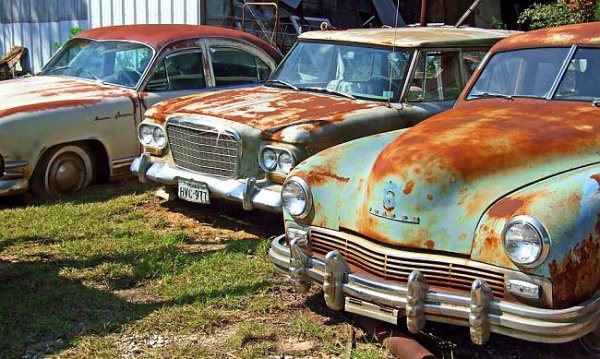Sculpture plasticine how to use. Master class Materials and tools Crafts Modeling Casting We sculpt and cast a sculpture Plasticine
I have long wanted to make a sculpture of an angel with my own hands. On one site I liked the images that will be useful in the future. But as always, I want to add something of my own. We print out the “visual aid” so as not to constantly run to the computer and get started. Why not?
We sculpt a figure from sculptural plasticine. Inside, regular colored plasticine and a half-liter jar are used to save sculpture plasticine. I sculpted the wings separately so that the figure would not be too complex.

We finalize the small details and at this point the plasticine figure is ready for the next stage.

To fill the mold, we prepare formwork from boards fastened together with self-tapping screws. Cover the internal seams at the bottom and sides of the formwork with plasticine. We place our figure inside in the center.
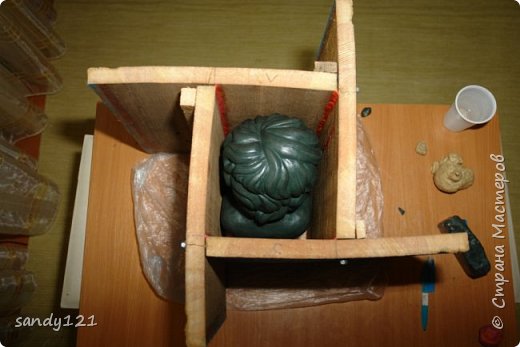
Mix the silicone two-component mastic thoroughly and pour it into the formwork. We are waiting for it to harden. Carefully remove the plasticine figure from the resulting mold and pour a strong solution of sand and cement into it. I did not use crushed stone in the mixture because there are many small parts.

We are waiting for our solution to harden. Now we remove the casting from the mold. The silicone breaks in places because the three-dimensional figure does not come out of it so easily. But this is not scary, the gaps are well sealed with sealant.
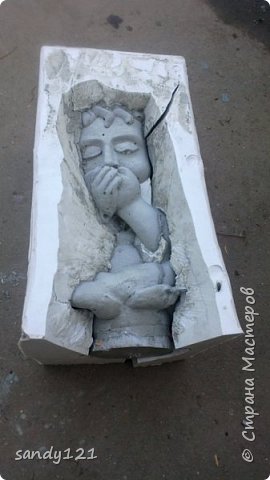
No matter how hard you try, the casting will not come out of the mold perfectly smooth. You will need to putty the sinks to remove any remaining air. The wings are made using the same principle in a separate form. All that remains is to prime and paint
Today, people often choose the most unexpected hobbies with which they can surprise and amaze enthusiastic spectators. For example, you can sculpt from plaster, dough, clay, rock wax and even plasticine, which is a soft and plastic material. That is why a plasticine sculpture looks as realistic as possible and fully corresponds in content to the master’s idea. However, it is not entirely easy to create such beauty, and in addition to consumables, you additionally need to use the help of a master, the guidance of a professional in a given direction. For everything to work out, the first step is to decide what exactly it will be, and only then proceed to implement your own idea. For example, making geometric and abstract shapes is easy, but not every professional can create a face and repeat all the features. So it’s best to start with the most basic.
If the creator cannot come up with a specific plot or the most suitable image, you can safely use your own imagination or the help of the Internet, where a large number of pictures on the most unexpected topics are always collected. For example, it will be a running man, who must be made of plasticine, and made voluminous and durable. The first step is to carefully examine the selected picture, and then use rigid wire to create its three-dimensional silhouette. The resemblance can only be distant; it is important to preserve all parts of the body, and then, using a hammer and nails, nail the wire sculpture onto a wooden plank, which in this case acts as an elementary base. But the work does not end there, although a very original and solid figure has already been created. It is very important that the wire repeats the human silhouette, otherwise the plasticine resemblance will not be found.
The next step is to make the statue itself using sculptural plasticine, and for this you need to select a suitable shade and give the plasticine mass the shape of a person. Separately, it is necessary to paste it over the body, attaching plasticine to a wire frame, then make limbs of the required length - upper and lower. It is very important to qualitatively fasten the individual components of plasticine so that the finished figure does not fall apart prematurely or lose one of its body parts. In this simple and accessible way, a plasticine man is formed, but there is no need to rush into making its final part - the head, since it will be attached to the base last. It is worth recalling that the frame of the head is a wire loop, made at the initial stage of the formation of a future person from plasticine. You need to roll out the ball and attach it to the indicated place, secure it firmly.
For those who think that a homemade plasticine figure is ready, they are greatly mistaken, since it still looks faded and inexpressive. To correct a negative overall image, it's time to add attributes to it. This could be clothing made from separate scraps of fabric, a headdress made of colored paper, a violin or other instrument made of wood, or other elements made from plasticine of a different color. Here you can show creativity and imagination, and everything depends on the theme of the main character made of plasticine. You should not make your work clumsy and pretentious; it is very important to maintain the style, color scheme, choose a harmonious material and build on a given sample. You can use a stack and a knife to create facial features and other little details that somewhat enliven the image of a person made of plasticine. The main thing here is not to overdo it, otherwise the idea will be lost, and the figure will have a careless and eccentric appearance.
As you know, in warm conditions plasticine somewhat loses its chosen shape and “floats”. To prevent this from happening to the finished figurine, it needs to be frozen. Nothing complicated, just put the homemade man in the freezer for a few hours, and then remember to take it out. This time is enough for the material to harden, get used to its new form and simply please the creator’s eye. It is not advisable to paint plasticine a different color, and it is also not recommended to cover it with varnish. This is a durable and reliable material that will hold its shape for a long period of time and will not “float”, unless, of course, the finished work is placed in the sun or close to a radiator. Otherwise, the image will very soon become soft, the facial features of the plasticine man will be lost, and the figure will sag with the appearance of a wire base. This cannot be allowed under any circumstances, otherwise you will have to start all over again.
To make a beautiful figure from plasticine, it is important to always remember little secrets. First of all, the wire base must be made symmetrically, otherwise the finished work will look ridiculous. In addition, to create a plasticine figure, you need to prepare a tool where each stack will have a different thickness for more accurate reproduction of individual elements against the general background. It is also important not to forget that plasticine is not attached with PVA glue, so all decorative elements and attributes of the design will still have to be attached to a plasticine base. This is not difficult to do, since plasticine, as you know, can take on any given shape. It is also important to fix the figure on a weighty base so that it does not fall in the future. It is advisable that it be a sheet of plywood or a block of wood. If you follow the recommendations, everything will definitely work out.
The first thing you need to know is that anyone can learn to sculpt sculptures from plasticine, provided they have the desire or motivation. However, the above applies to absolutely any matter. But first you need to purchase the “right” plasticine that will meet all the necessary requirements. Sculptural plasticine has some differences from ordinary plasticine - it is much more flexible. It contains mountain or beeswax, fillers (for example, dry clay, talc, or some others), plasticizers, and technical oil or petroleum jelly to give softness. Its color spectrum is closer to the natural colors found in nature. But nevertheless, it can be painted well with any paint. Like any other material, plasticine can be made with some technological violations, and its properties can be changed. 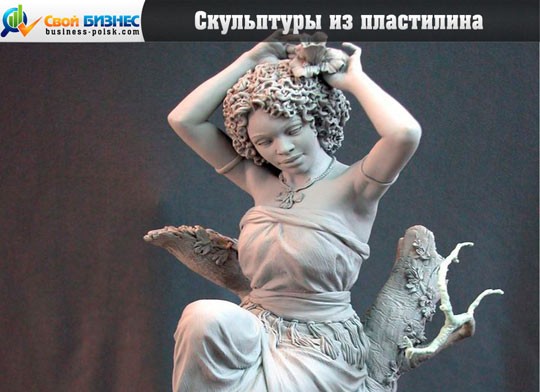 When choosing sculptural plasticine, you need to consider the following points: Elasticity, pliability, the required ratio of softness and hardness. The plasticine should roll easily in your hands or on any surface, without leaving smeared marks. Plasticine should not crumble, although after creating a sculpture, sculptural plasticine, after giving it a shape, does not dry out and does not lose its plasticity - this is another difference from ordinary plasticine. Under the influence of heat, sculptural plasticine should melt, and stains from it should be easily removed with soap and water. Yes, and don’t forget to purchase some equipment that you will definitely need in your work. These are special plastic boards of various sizes, small knives for cutting plasticine - stacks (a set of stacks can be bought at any children's or specialized store), various molds (a very useful and necessary thing), and aluminum or iron wire for sculpture frames, because a large sculpture is made of plasticine can settle under its own weight without internal support.
When choosing sculptural plasticine, you need to consider the following points: Elasticity, pliability, the required ratio of softness and hardness. The plasticine should roll easily in your hands or on any surface, without leaving smeared marks. Plasticine should not crumble, although after creating a sculpture, sculptural plasticine, after giving it a shape, does not dry out and does not lose its plasticity - this is another difference from ordinary plasticine. Under the influence of heat, sculptural plasticine should melt, and stains from it should be easily removed with soap and water. Yes, and don’t forget to purchase some equipment that you will definitely need in your work. These are special plastic boards of various sizes, small knives for cutting plasticine - stacks (a set of stacks can be bought at any children's or specialized store), various molds (a very useful and necessary thing), and aluminum or iron wire for sculpture frames, because a large sculpture is made of plasticine can settle under its own weight without internal support.  The technique of modeling from sculptural plasticine is practically no different from modeling from ordinary material, with the exception of some small nuances. Before starting work, prepare warm water in a bath (to wet your hands and warm up the plasticine), a small amount of Vaseline (or machine oil) to give the material greater plasticity in cases where it is needed. Cut the required amount of material with a knife or tear it off with your hands, heat it in warm water, and then knead it thoroughly with your hands. The water must be warm, its temperature should not exceed eighty degrees, otherwise its plastic properties will begin to be lost. You shouldn’t heat up too large a piece of plasticine either, for the same reasons. If you’ve never dealt with plasticine before, try making something simple first. Look around, there are pieces of furniture in the room, start with them. To get a taste for it and learn how to create primitive crafts, one day, or even just a few hours, will be enough. Then move on to more complex compositions. For such work, and even more so big size you need to make a frame. Wire is a material no less pliable than plasticine, and to make a frame you do not need to give it the shape of the future product with great precision. It is enough to achieve an approximate resemblance to the future sculpture. Then you need to apply the main mass to the frame - cover it with plasticine so that it sticks tightly to it. After this, begin to match the proportions of the details of the sculpture. Examine your work from all sides, because a plasticine sculpture is a three-dimensional object that should be viewed from all sides. While sculpting, make sure that the sculpture does not fall to the sides, and that all its parts correspond to the proportions. It is better to constantly have before your eyes the image from which the sculpture is made: the sitter, the object, photographs from different angles.
The technique of modeling from sculptural plasticine is practically no different from modeling from ordinary material, with the exception of some small nuances. Before starting work, prepare warm water in a bath (to wet your hands and warm up the plasticine), a small amount of Vaseline (or machine oil) to give the material greater plasticity in cases where it is needed. Cut the required amount of material with a knife or tear it off with your hands, heat it in warm water, and then knead it thoroughly with your hands. The water must be warm, its temperature should not exceed eighty degrees, otherwise its plastic properties will begin to be lost. You shouldn’t heat up too large a piece of plasticine either, for the same reasons. If you’ve never dealt with plasticine before, try making something simple first. Look around, there are pieces of furniture in the room, start with them. To get a taste for it and learn how to create primitive crafts, one day, or even just a few hours, will be enough. Then move on to more complex compositions. For such work, and even more so big size you need to make a frame. Wire is a material no less pliable than plasticine, and to make a frame you do not need to give it the shape of the future product with great precision. It is enough to achieve an approximate resemblance to the future sculpture. Then you need to apply the main mass to the frame - cover it with plasticine so that it sticks tightly to it. After this, begin to match the proportions of the details of the sculpture. Examine your work from all sides, because a plasticine sculpture is a three-dimensional object that should be viewed from all sides. While sculpting, make sure that the sculpture does not fall to the sides, and that all its parts correspond to the proportions. It is better to constantly have before your eyes the image from which the sculpture is made: the sitter, the object, photographs from different angles.  To make the sculpture more realistic, you need to find its axis of symmetry and constantly check whether both halves are symmetrical in relation to each other. Determine the compositional center of the sculpture - the detail that will be the main one. For example, in a bust it will be a face. This center needs to be worked out especially carefully, achieving complete resemblance to the original. Well, last of all, stick small details to secondary areas. http://business-poisk.com/skulptury-iz-plastilina.html
To make the sculpture more realistic, you need to find its axis of symmetry and constantly check whether both halves are symmetrical in relation to each other. Determine the compositional center of the sculpture - the detail that will be the main one. For example, in a bust it will be a face. This center needs to be worked out especially carefully, achieving complete resemblance to the original. Well, last of all, stick small details to secondary areas. http://business-poisk.com/skulptury-iz-plastilina.html
pros modern world in terms of business development, the fact is that you can make money out of anything, literally out of thin air (in the literal sense of the expression). But today I don’t want to talk about how to sell “healing air” from the Himalayas, or the air of your city (such a business idea really exists!). Today’s publication is devoted to how to make your favorite activity, hobby, or simple hobby begin to generate additional income. It is much easier for people with a practical mindset to organize their own business - perseverance in achieving their goal, sober calculation, and irrepressible energy will allow them to bring their idea to life in a short time. Well, if it doesn’t work out, then they immediately start implementing another idea.
But what about creative individuals for whom numbers and logic are as far from understanding as the Earth is from Mars? First of all, you don’t need to give up on business, but try to understand whether your passion could become your job, and not only feed you and your family, but also allow you to have a solid income. Practice shows that this is feasible in ninety-nine percent of a hundred. And even if before this time you have not been involved in, for example, modeling sculptures from plasticine, now is the time to think about whether to take it seriously? Moreover, if you have a passion for this, as they say? In addition, making sculptures from plasticine, at first glance a child’s activity, can bring quite a “non-children’s” income.
HOW TO CHOOSE PLASTICINE FOR MODELING?
The first thing you need to know is that anyone can learn to sculpt sculptures from plasticine, provided they have the desire or motivation. However, the above applies to absolutely any matter. But first you need to purchase the “right” plasticine that will meet all the necessary requirements. Sculptural plasticine has some differences from ordinary plasticine - it is much more flexible.
It contains mountain or beeswax, fillers (for example, dry clay, talc, or some others), plasticizers, and technical oil or petroleum jelly to give softness. Its color spectrum is closer to the natural colors found in nature. But nevertheless, it can be painted well with any paint. Like any other material, plasticine can be made with some technological violations, and its properties can be changed.

When choosing sculptural plasticine, you need to consider the following points:
- Elasticity, pliability, the necessary ratio of softness and hardness.
- The plasticine should roll easily in your hands or on any surface, without leaving smeared marks.
- Plasticine should not crumble, although after creating a sculpture, sculptural plasticine, after giving it a shape, does not dry out and does not lose its plasticity - this is another difference from ordinary plasticine.
- Under the influence of heat, sculptural plasticine should melt, and stains from it should be easily removed with soap and water.
Yes, and don’t forget to purchase some equipment that you will definitely need in your work. These are special plastic boards of various sizes, small knives for cutting plasticine - stacks (a set of stacks can be bought at any children's or specialized store), various molds (a very useful and necessary thing), and aluminum or iron wire for sculpture frames, because a large sculpture is made of plasticine can settle under its own weight without internal support.
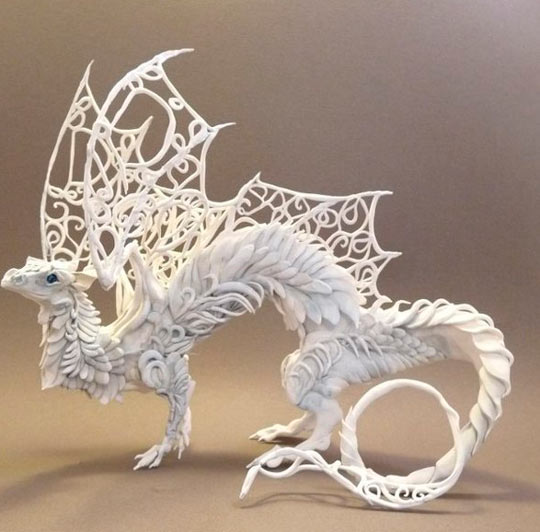
GET READY. LET'S START Sculpting
The technique of modeling from sculptural plasticine is practically no different from modeling from ordinary material, with the exception of some small nuances. Before starting work, prepare warm water in a bath (to wet your hands and warm up the plasticine), a small amount of Vaseline (or machine oil) to give the material greater plasticity in cases where it is needed.
Cut the required amount of material with a knife or tear it off with your hands, heat it in warm water, and then knead it thoroughly with your hands. The water must be warm, its temperature should not exceed eighty degrees, otherwise its plastic properties will begin to be lost. It is also not worth heating up too large a piece of plasticine for the same reasons.
If you've never worked with plasticine before, try making something simple first. Look around, there are pieces of furniture in the room, start with them. To get a taste for it and learn how to create primitive crafts, one day, or even just a few hours, will be enough. Then move on to more complex compositions. For such work, and especially large ones, you need to make a frame.
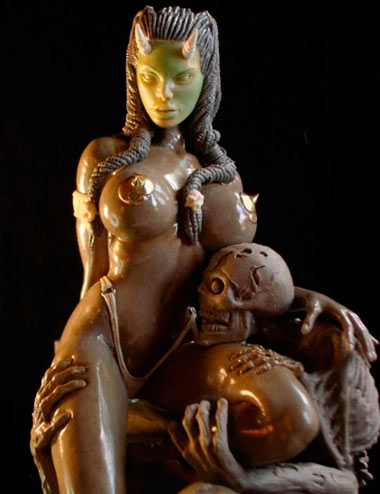
Wire is a material no less pliable than plasticine, and to make a frame you do not need to accurately shape it into the shape of the future product. It is enough to achieve an approximate resemblance to the future sculpture. Then you need to apply the main mass to the frame - cover it with plasticine so that it sticks tightly to it. After this, begin to match the proportions of the details of the sculpture.
Examine your work from all sides, because a plasticine sculpture is a three-dimensional object that should be viewed from all sides. While sculpting, make sure that the sculpture does not fall to the sides, and that all its parts correspond to the proportions. It is better to constantly have before your eyes the image from which the sculpture is made: the sitter, the object, photographs from different angles.

SOME TECHNICAL POINTS OF MODELING
To make the sculpture more realistic, you need to find its axis of symmetry and constantly check whether both halves are symmetrical in relation to each other. Determine the compositional center of the sculpture - the detail that will be the main one. For example, in a bust it will be a face. This center needs to be worked out especially carefully, achieving complete resemblance to the original. Well, last of all, stick small details to secondary areas.
HOW TO MAKE MONEY FROM THIS
Practice shows: some people need three to four months to learn how to sculpt plasticine sculptures in order to start making money, while others need a few weeks. You can sculpt anything, both objects of your own imagination and to order. One of the options for creating sculptures from plasticine is sculpting busts of celebrities. Such sculptures are in good demand.
For example, one sculptor who makes plasticine busts of celebrities: politicians, musicians, businessmen, actors, earns up to ten thousand dollars a month. The cost of one product starts from a thousand “green”. She pays equal attention to both the accuracy of sculpting details and the drawing (coloring) of sculptures. Her works include: Michael Jackson, Barack Obama, Vladimir Putin, Steve Jobs, Mickey Jager, and many others.
A schoolboy from Bashkiria earns tens of thousands of rubles by sculpting and selling plasticine sculptures of characters from cartoon films and computer games. The figures of the Predator, Alien, Stalker, ancient warriors, dragons and other characters look very impressive and sell with a bang.
In addition to sculptures and miniatures, models and sketches of stucco ceilings are also made from sculptural plasticine. That is, having learned how to sculpt, you can consider working in an interior design or design workshop. Even entire paintings are made from plasticine. At least it is no more difficult (and maybe even easier!) than making paintings from wood, or paintings embroidered with ribbons.
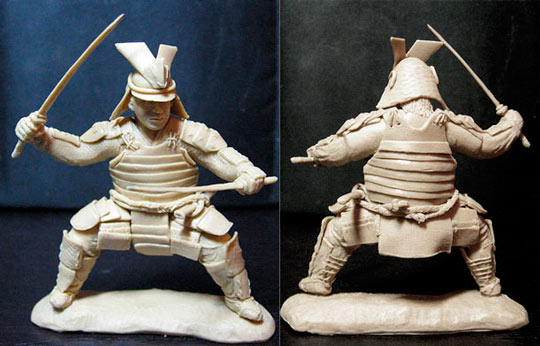
HOW TO FIND A SALE FOR YOUR PRODUCTS
An important part of marketing will be creating your own online store, or website, where all your work will be presented. Here you can also organize online lessons on making plasticine sculptures. By the way, such lessons can be conducted offline, organizing courses not only for adults, but also for children. After all, talent needs to be developed from childhood. As I already said, the main thing is desire and motivation. Try it, you will definitely succeed!
